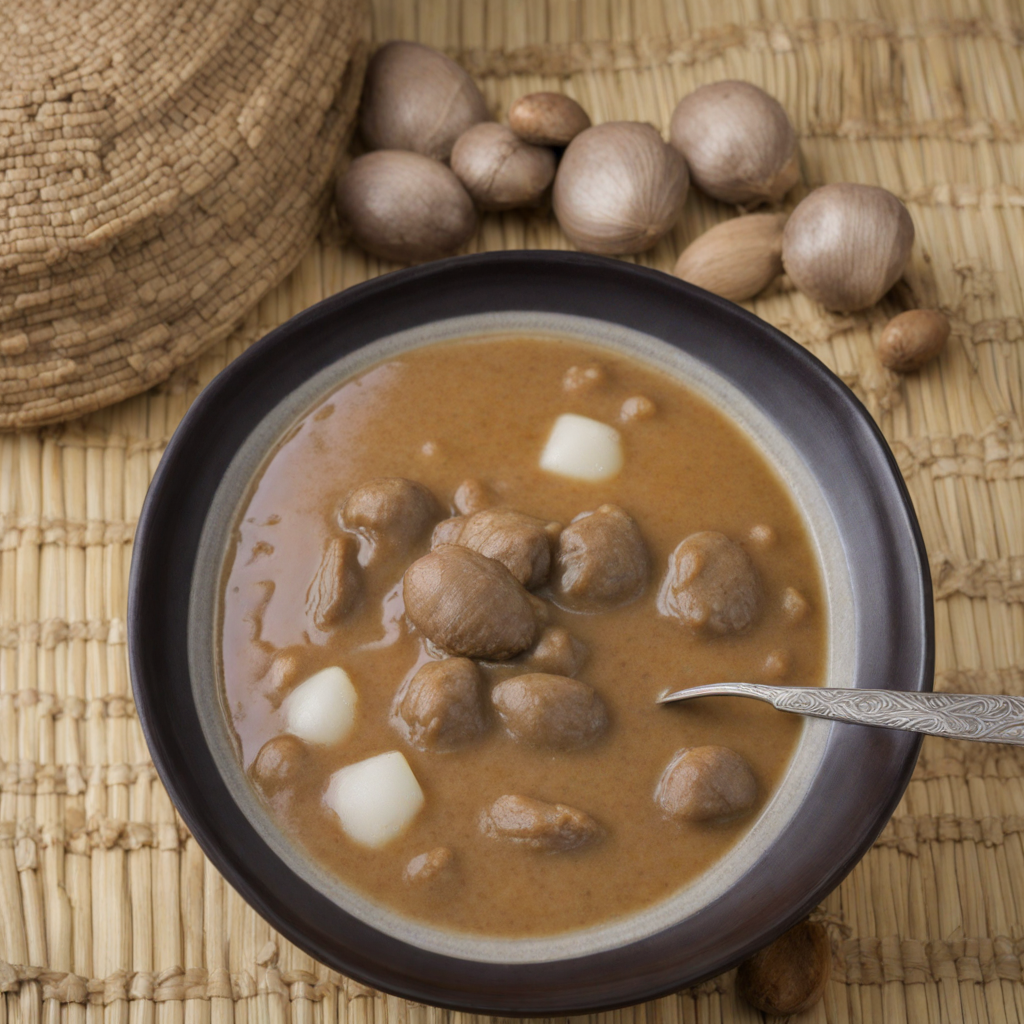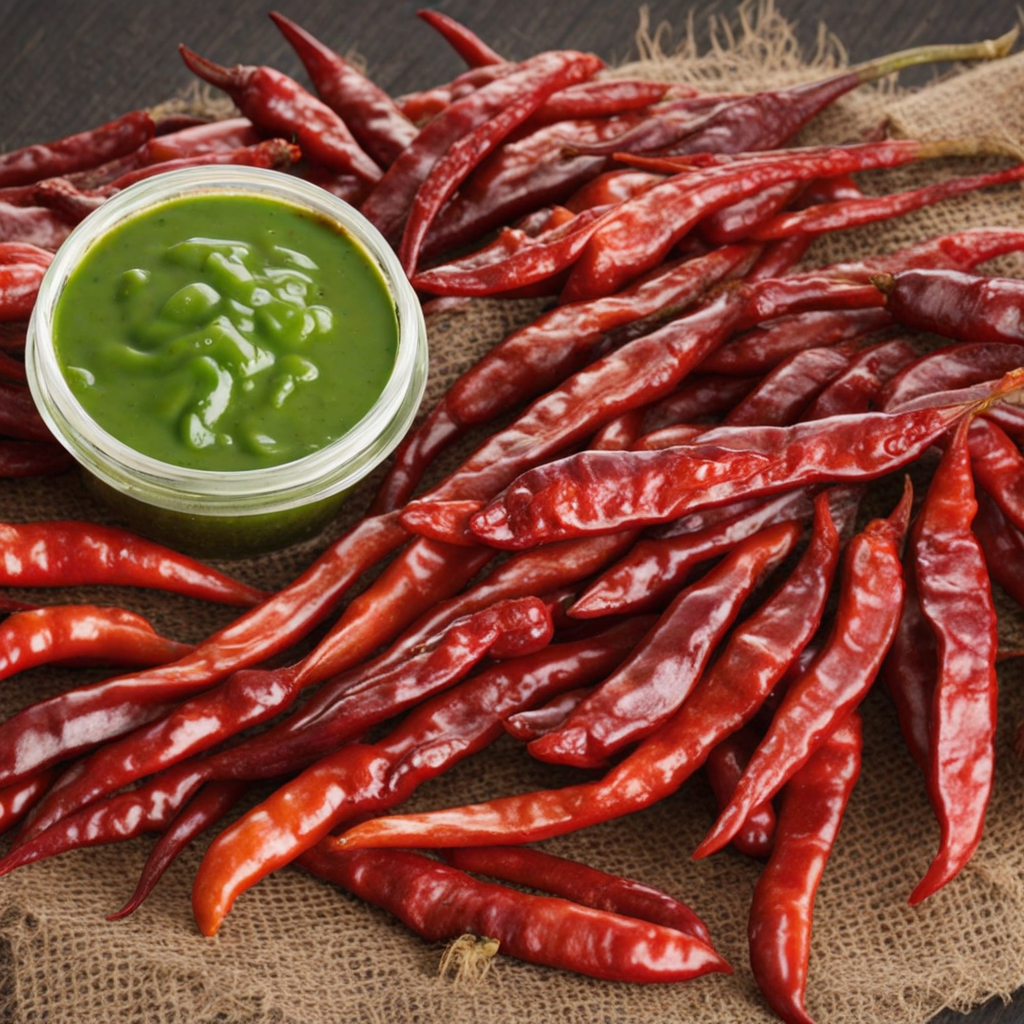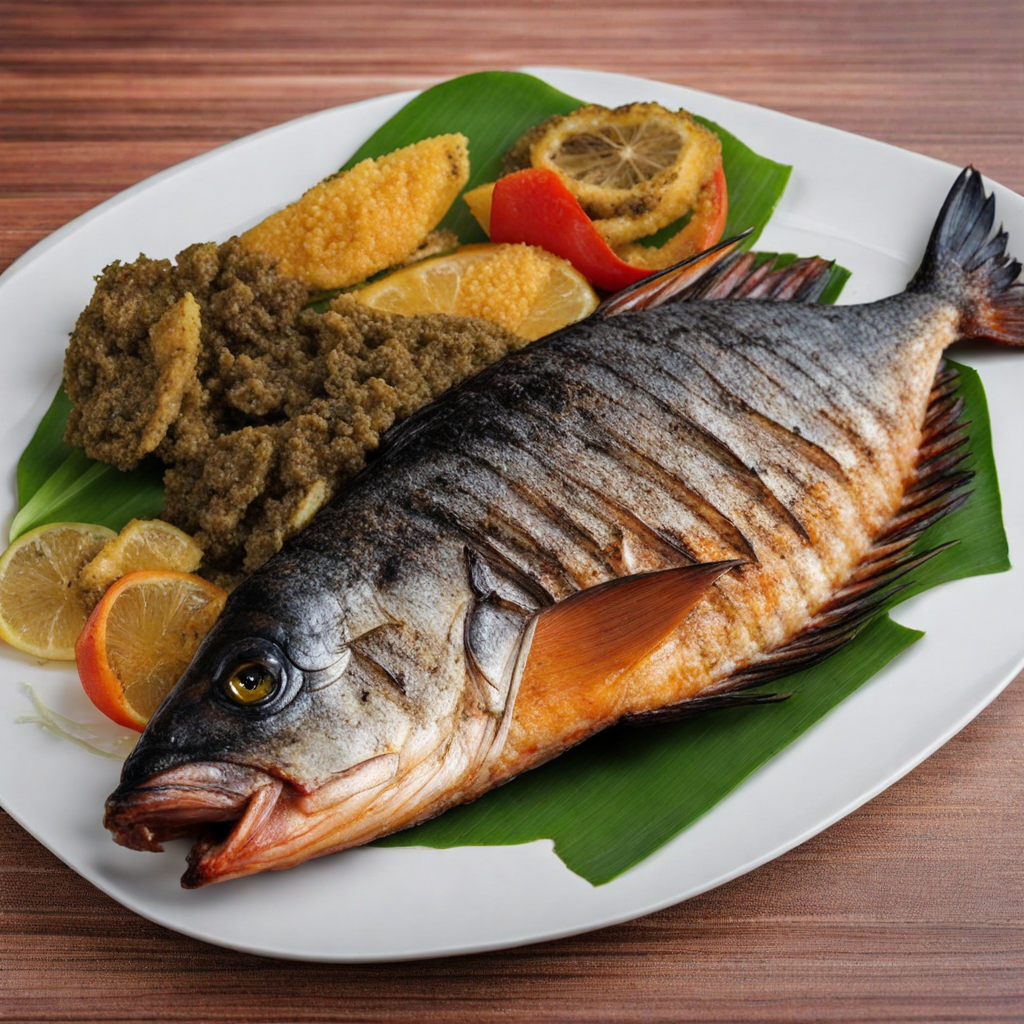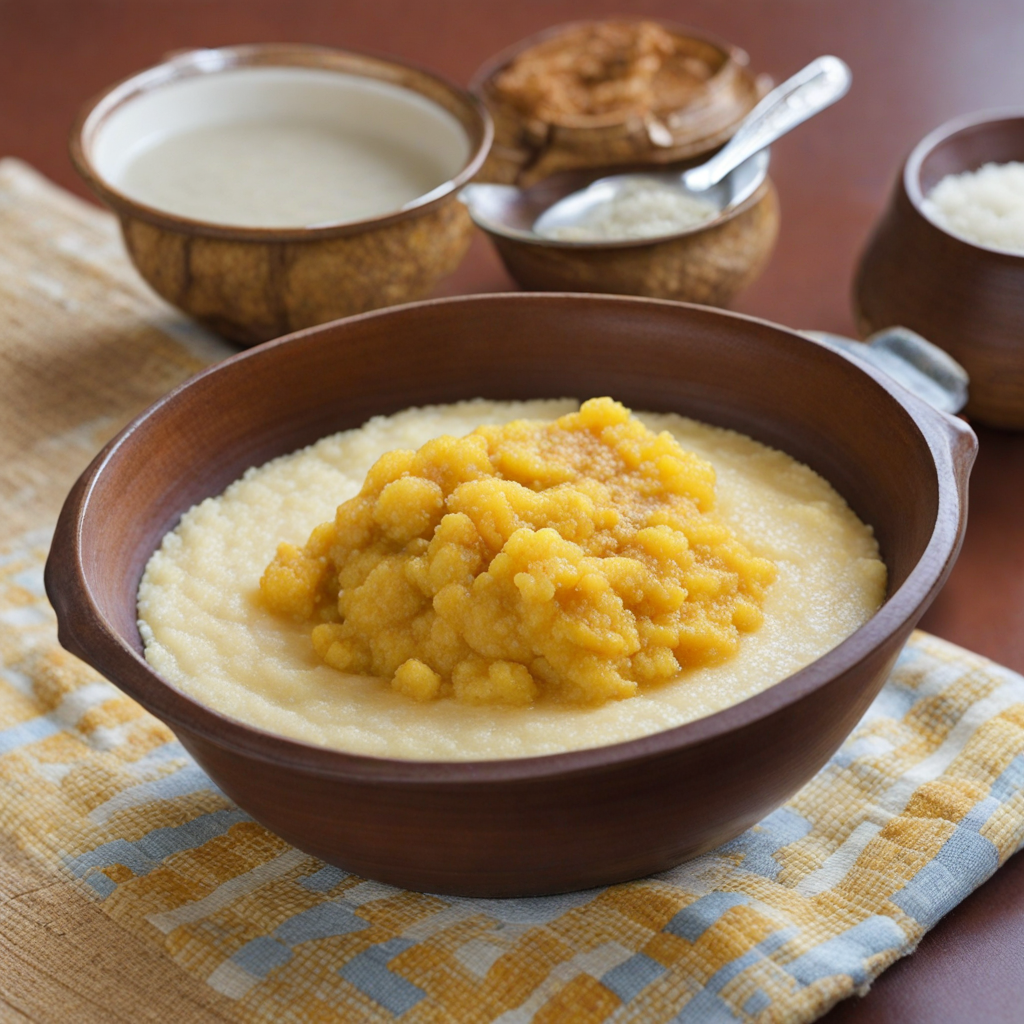Mongozo
Mongozo is a traditional dish from the Democratic Republic of the Congo, celebrated for its rich, hearty flavors and its ability to bring people together. The base of this dish typically consists of finely ground cassava flour, which is often combined with ingredients like peanuts, palm oil, and a variety of spices to create a thick, porridge-like consistency. This combination results in a comforting and filling meal that is both satisfying and packed with nutrients. The use of local ingredients reflects the agricultural abundance of the region, making Mongozo not just a dish, but a celebration of Congolese culture and culinary heritage. One of the standout features of Mongozo is its versatility; it can be served as a main course or as a side dish to complement a variety of proteins such as fish, chicken, or beef. The dish often comes with a spicy sauce or a tangy vegetable relish, adding layers of flavor and enhancing the overall dining experience. The balance of textures—from the creamy consistency of the cassava to the crunch of peanuts—creates a delightful mouthfeel that keeps diners coming back for more. Eating Mongozo is not just a meal, but a communal experience, often enjoyed with family and friends, fostering connection and togetherness. To truly appreciate Mongozo, one must savor each bite and embrace its cultural significance. The dish is often accompanied by traditional drinks, such as palm wine or local beers, which enhance the flavors and provide a refreshing contrast. As you explore Mongozo, you'll discover not only the unique taste of the ingredients but also the stories and traditions that have shaped this beloved Congolese dish over generations. Each mouthful tells a tale of the land and the people, making Mongozo a remarkable culinary journey worth embarking on.
How It Became This Dish
Mongozo: A Culinary Journey Through the Democratic Republic of the Congo Mongozo, a staple food of the Democratic Republic of the Congo (DRC), holds a rich tapestry of history, culture, and significance that reflects the diverse communities and the geography of this vast nation. Known as a type of fermented porridge, Mongozo is traditionally made from maize or cassava, often flavored with ingredients like groundnut paste or palm oil. This dish is more than mere sustenance; it is a cultural artifact that embodies the history and identity of the Congolese people. #### Origins and Ingredients The roots of Mongozo can be traced back to the agricultural practices of various ethnic groups in the DRC. The country is home to over 200 ethnic groups, each with its unique contributions to the culinary landscape. Maize and cassava, the primary ingredients of Mongozo, are two of the main crops cultivated in the region, brought to the Congo by different migration routes and trade networks over centuries. Cassava, originally native to South America, was introduced to Africa in the 16th century and quickly adapted to local conditions, becoming a staple food. The process of fermentation, essential to the production of Mongozo, is an ancient practice in many cultures. In the DRC, this technique not only enhances the flavor but also promotes the nutritional value of the porridge, making it easily digestible and rich in probiotics. The fermentation process can take several days and involves the use of local microorganisms, creating a unique flavor profile that varies from region to region. #### Cultural Significance Mongozo serves as a symbol of unity and community within the DRC. Traditionally, it is prepared in large quantities, emphasizing its role as a communal dish. Sharing Mongozo at gatherings, celebrations, and rituals strengthens social bonds and reflects the values of hospitality and togetherness. It is often served during significant events such as weddings, funerals, and harvest festivals, where it acts as a medium for expressing cultural identity. In many Congolese communities, Mongozo is associated with the concept of "Ubuntuman," which emphasizes the interconnectedness of individuals within a community. The preparation and sharing of the dish reinforce social ties and foster a sense of belonging. Mongozo is often accompanied by a variety of side dishes, such as grilled fish, stewed meat, or vegetable sauces, showcasing the diversity of Congolese cuisine and the importance of balance in meals. #### Development Over Time As the DRC has experienced significant political and social changes throughout history, so too has Mongozo evolved. The colonial period, marked by the exploitation of natural resources and the imposition of foreign agricultural practices, had profound effects on traditional food systems. Despite these challenges, Mongozo remained a resilient staple, adapting to changing circumstances and embracing new ingredients. In the post-colonial era, the DRC faced economic instability and conflict, which impacted agricultural production and access to food. During these times, Mongozo became a symbol of survival and resilience. Communities developed innovative ways to cultivate and prepare the dish, often using locally available resources. This adaptability ensured that Mongozo continued to play a vital role in the diets of many Congolese people. In recent years, there has been a resurgence of interest in traditional foods like Mongozo, driven by a global movement towards sustainability, health, and local food systems. Food activists and culinary enthusiasts are increasingly recognizing the value of indigenous ingredients and traditional cooking methods. Mongozo is now celebrated not just as a local delicacy but also as a part of the global culinary heritage. This renewed appreciation has led to the establishment of local markets and food festivals that highlight Congolese cuisine, allowing Mongozo to take its rightful place on the culinary stage. #### Mongozo in Contemporary Society Today, Mongozo continues to be a vital part of daily life in the DRC. It is commonly consumed for breakfast or as a filling snack throughout the day. As urbanization increases, the preparation of Mongozo has adapted to modern lifestyles, with many people opting for quicker methods of fermentation and cooking that fit into their busy schedules. However, despite these changes, the core values associated with Mongozo remain intact. Furthermore, Mongozo has found its way into diaspora communities, where Congolese individuals living abroad recreate the dish as a way to connect with their roots. In this context, Mongozo becomes a bridge between cultures, allowing individuals to share their heritage with others and educate them about Congolese traditions. #### Conclusion Mongozo is more than just a dish; it is a reflection of the history, culture, and resilience of the Congolese people. From its origins rooted in the agricultural practices of diverse ethnic groups to its role in communal gatherings and modern adaptations, Mongozo embodies the spirit of the DRC. As globalization continues to influence culinary practices worldwide, Mongozo stands as a testament to the importance of preserving traditional foods and the stories they tell. Through Mongozo, the people of the Democratic Republic of the Congo celebrate their heritage, maintain their cultural identity, and foster community ties. As we explore the rich tapestry of global cuisine, we must recognize the significance of dishes like Mongozo that tell the story of a people, their land, and their enduring spirit.
You may like
Discover local flavors from Democratic Republic Of The Congo







